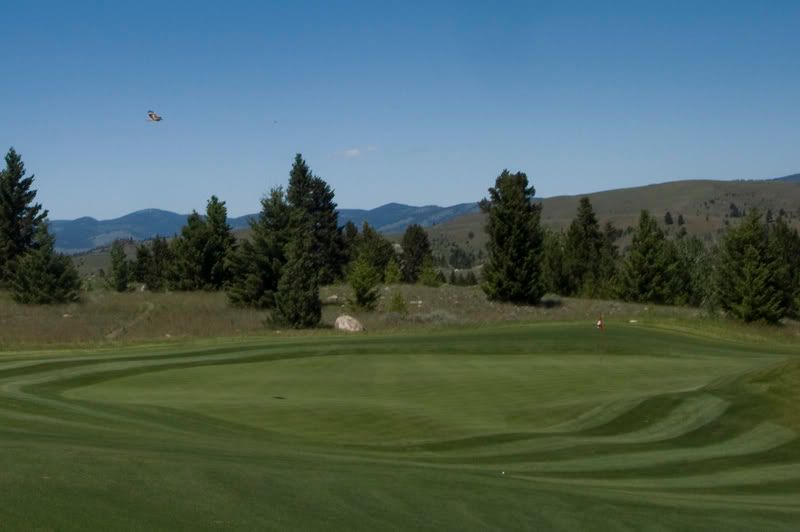There have been some murmurings about RCCC, so I thought I'd try my hand at a description of the 7th.
It is not really called the "Rocking 7" or "Rocker." I just made that up. A homage to the place. It could refer to a livestock brand, the "Rocking 7" (a "7" standing on a quarter circle or a rocking chair rail.) After all, this is a cattle company. But I was more thinking in terms of the mining heritage of the region. In early mining a "rocker" was a machine or process that shook things up. Once things started bouncing around, the lighter (and generally worthless) stuff would get thrown off and the heavier metals such as gold would stay in the rocker. So a rocker separated value from the junk.
So what does this have to do with a golf hole? Weil, first of all, as will be explained below, while the first 6 holes are fantastic, it is at No. 7 where things get shaken up a bit. But more generally, golf holes like the Rocking 7 (and courses like RCCC) ought to shake up golf design by providing a point of comparison so we may better separate value from junk. And then there is the giant rock in the middle of the fairway. Lastly the hole just plain
ROCKS.By the time golfers get to the Rocker, they may already be in awe of the golf course, as they would have just played six outstanding golf holes the likes of which they had
never seen before; over and around gigantic moraine ridges (think of dunes, only in a mountain setting and with ancient boulders instead of grains of sand,) hog-backed and humped landing areas, and deep hollows to greens that flow with the surrounding landscape. Fantastic golf.
But when the golfer reaches the 7th tee and turns to face the hole, he or she may sense that the thrills are just beginning. The stretch between the seventh tee and the seventeenth green is like the golf version of whitewater rafting. The elevation probably drops over 350 feet in this 11 hole stretch, but it is the twists, turns, rolls, ridges and
whoop-tee-doos (for lack of a better phrase) that provide the thrill. The seventh isn't necessarily better, more challenging, or even more fun. But it stands out because it provides terrific scale model of the entire experience. In other words, this one hole encompasses much that is great about RCCC and about golf course design at its best.
Some photos and descriptions.
From the back tee, 487 yards, the golfer must play almost over the edge of the 6th green and over the huge rolling moraine ridge with the boulder in the center. The hole plays significantly downhill, but the back tee is lower than the next tee forward, which is up the hill to the left. No sense giving these big hitters any more advantages . . .
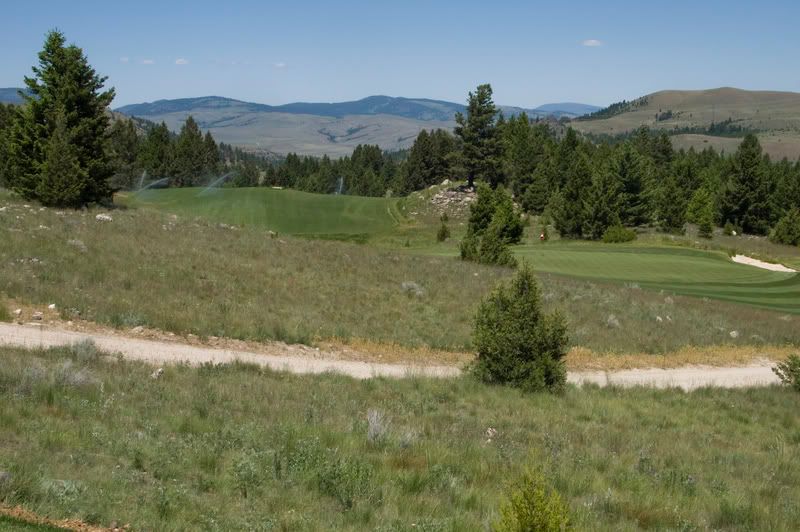
From behind the 447 yard tee one really gets a sense that one is at the top of the course. While the visibility is better from up on the tee, the golfer cannot see what lies beyond the huge, hog-backed hump shown a few photos below . . .
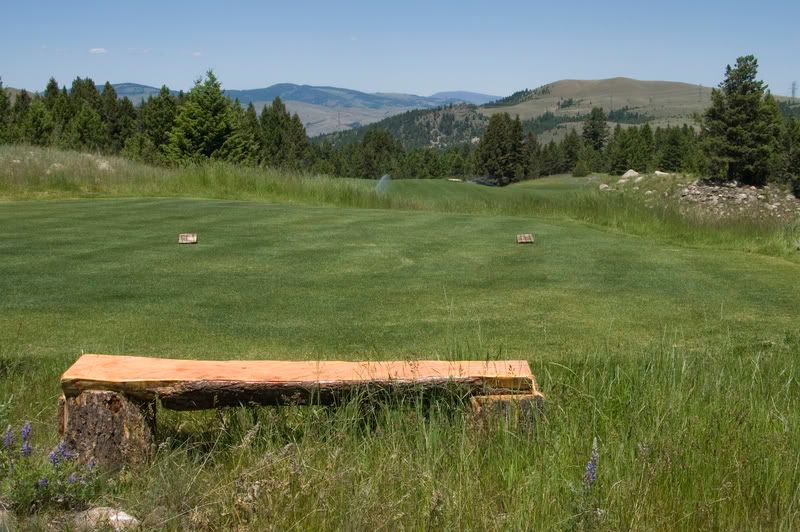
The beautiful 6th sits below and to the right of the 447 yard tee, again adding to the feel of being above the entire course. (I won’t get into commenting on that hole now, except to say that those fairway rolls look miniscule in the photo as compared to how they look real life.).
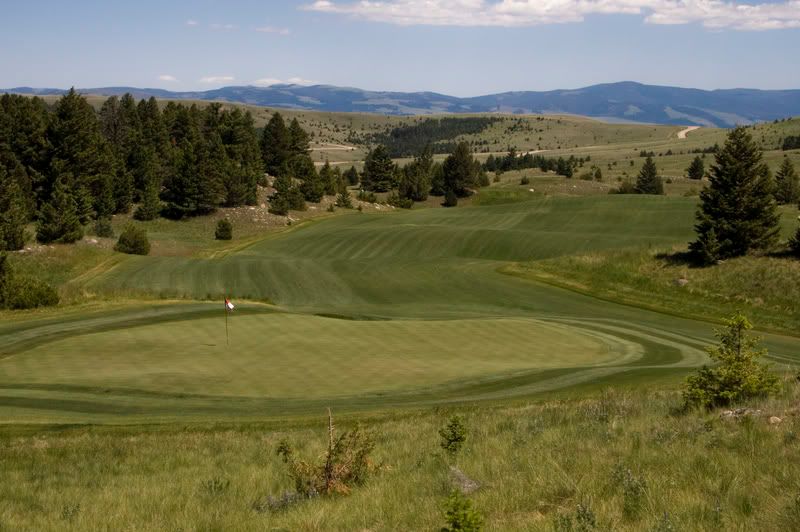
The next photo is taken from between the tee and the first roll. This is one of may humped or hog-backed landing areas on the course. Again, photo does not indicate the size of the moraine ridge. To give you some idea, the large boulder on the right may be as big as my small car. The boulder sticking out of the middle of the fairway (barely visible in the middle of the photo} is large enough that a foursome could use it as a picnic table, even with a few caddies. While the photos don't fully show it, the fairway cascades down to level of the green, well below the tee, and then zigs and zags around to large offset but opposing ridges that help guard the green. The boulder in the middle will probably serve as a aiming point for most, but there are more options than just this one.
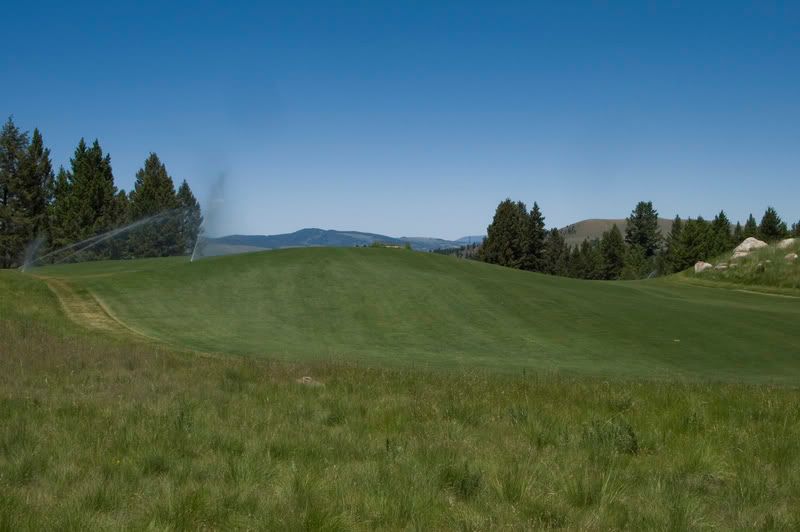
From near the middle boulder, one can see that the hole doglegs left, tempting the golfer to try and cut the corner a bit.
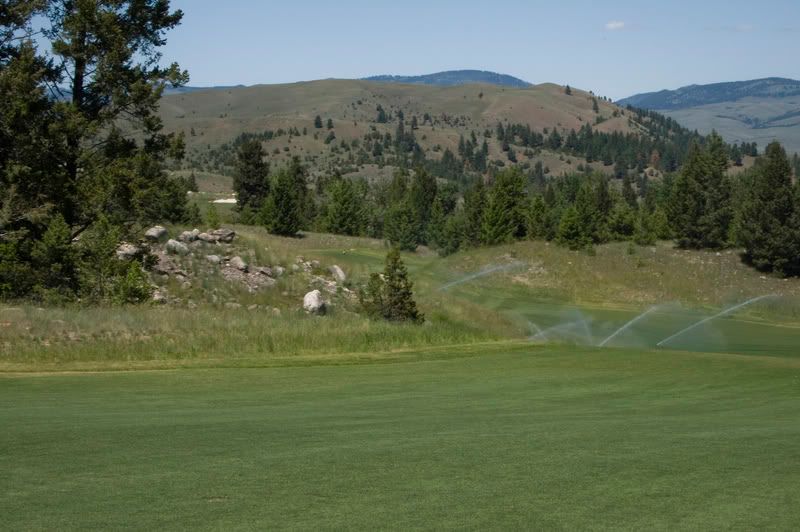
While the short hitter who ventures a tad left can shorten the hole, he may still face a long, blind approach . . .
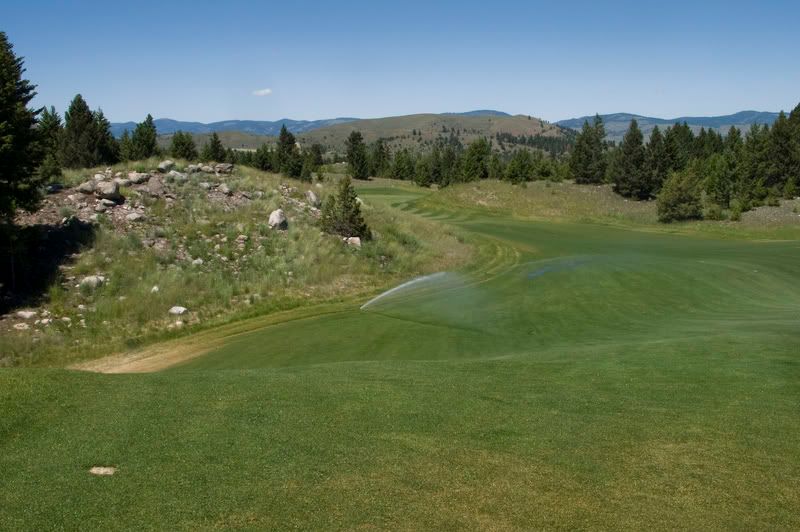
Likewise, while the big bomber who leans left

stay in the fairway and have only a wedge in, it will likely be blind. The green is probably only 115 yards from where this photo was taken, but is nowhere in site.
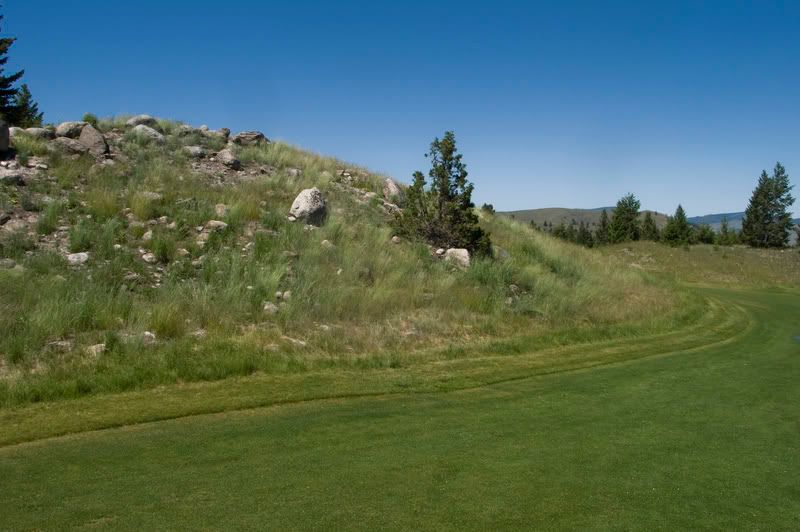
The road less traveled from the tee will likely be well to the right, over the pile of boulders in the right rough. While this looks to be a line of death (especially from the very back) there is actually plenty of fairway past the rocks.
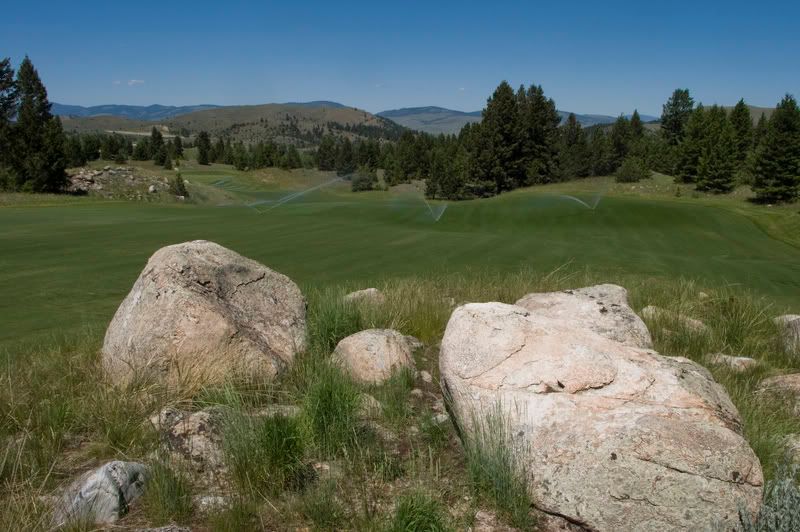
From here even the shorter hitter might be able to see part of the green, provided he made the carry in the first place.

. . . and while it will take a monstrous drive, the longer driver might be able to make it all the way to the bottom of the hill and see at least part of the green. But of course this may not be the best place to be for some of the pins.
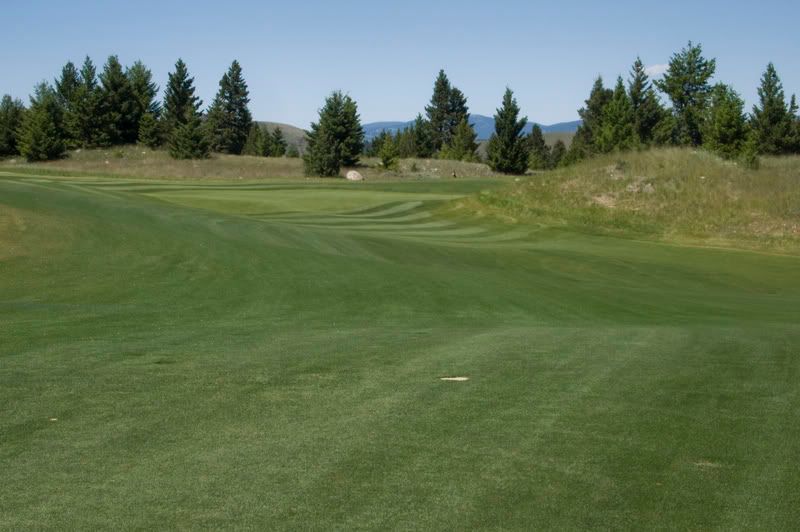
Unlike many supposedly great par fours, this one stays interesting through the green. The ridge left of the fairway smoothly feeds down into it, while the ridge on the right side drops abruptly into a swale that runs across the front right. Internally, there is plenty of movement, but it all feels natural. The day I walked the course I did not have a single club with me, but I had a golf ball, and I probably spent 20 or thirty minutes probably spent 15 rolling and bouncing the ball on and around this green and had a great time doing it. And the bunkering scheme? Perfectly absent.
Some shots of the green from a variety of angles.
Notice the transition from the native to the fairway. In places the bordering native was thicker but much was just this. Ideal.
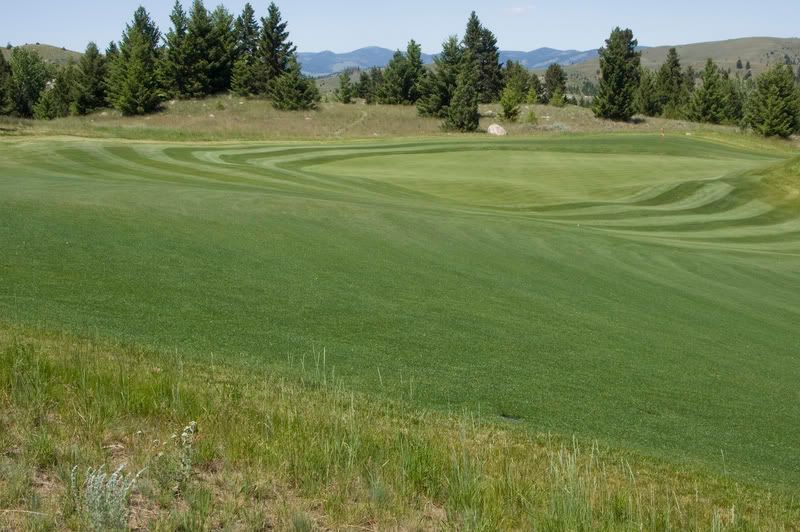
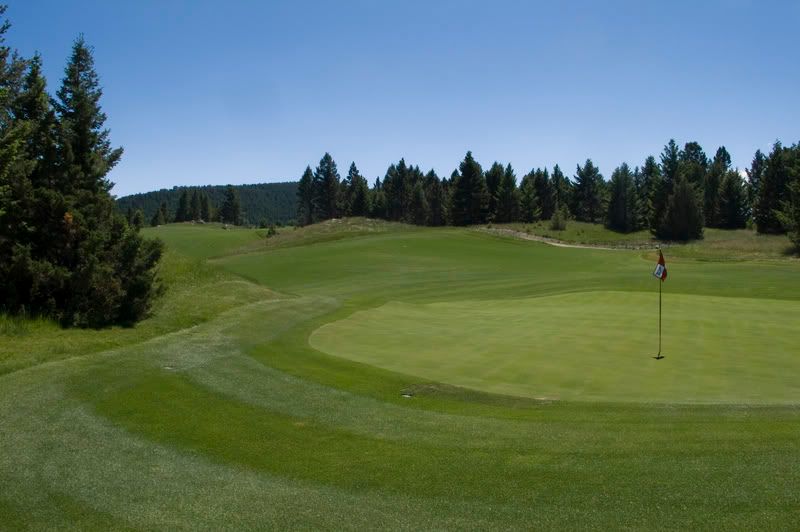
I thought this hawk might take my ball. If he had, I would have had to have found a round rock so I could keep expirimenting with the green.
